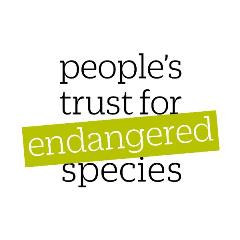Living with Mammals
This post is greater than 6 months old - links may be broken or out of date. Proceed with caution!

Across the world, more people live in urban areas than in rural ones. In the UK, four-fifths of us do. Towns and cities are where most of us experience nature, and the green spaces within these areas are important to people and their wild neighbours alike.
COVID-19 has meant that, for the moment, we’re mostly staying in more, social distancing ourselves to reduce the impact of the virus over the coming months. At this time, perhaps more than ever, turning our attention to wildlife— and connecting with the natural world—will do us good.

Wildlife charity People’s Trust for Endangered Species (PTES) is calling on volunteers across the country to record sightings of wild mammals (or the signs they leave behind, such as footprints or droppings) they see in their gardens, or from their balconies or windows, to help conservationists understand how their numbers are changing and to record the diversity of mammals living in our gardens and green spaces.

The British have a long tradition of natural history recording. A recent example is Jennifer Owen’s inventory study of her typical, suburban garden in Leicester, which spanned thirty years. In a little less than a tenth of a hectare, she identified (with help from others) over 2,600 species, including 64 vertebrate species and 1,997 insects. In fact, her garden was visited by a quarter of all British species of both bees and hoverflies. For big groups, with lots of similar species, she didn’t attempt to identify all the members, but a detailed study of one group —a family of parasitic wasps, the Ichneumonidae—recorded 533 species, of which seven were new to Britain and four new to science. There is a lot under our noses if we take the time to look.
Jennifer Owen recorded seven mammal species. In gardens and green spaces collectively, around two dozen species of mammal are typically recorded in such surveys. For some, such as hedgehogs and bats, these areas offer resources increasingly scarce in the wider landscape. Mown lawns are ideal foraging sites for hedgehogs feeding on earthworms and beetle larvae, while attic spaces and crevices between roof tiles provide roosting sites for bats. From the ubiquitous, such as grey squirrels, to the less common, such as otters and pine martens, gardens can be a valuable habitat for a surprising number of mammals.
The built environment is nothing if not dynamic: old sites are redeveloped, fashions for decking or rock gardens come and go, and new housing estates are built. In amongst all this, we should ensure the ‘green health’ of towns and cities is preserved and having pipistrelle bats, hedgehogs and other mammals as our wild neighbours is a good indication of that.
Living with Mammals runs through the spring and autumn this year, asking people to record sightings and signs of mammals. The first thirteen-week period started on 30 March and runs until 28 June. Normally, survey sites would include gardens, allotments, cemeteries and recreational spaces, but this spring, as we keep travel to a minimum to protect ourselves and others, we’re asking only for garden surveys to take place. Hopefully, by September, when the survey starts again, a little more of normal life will have resumed and sites from golf courses to railway embankments can be included.

But, if you’re lucky enough to have a garden now, it’s an ideal space to survey. For wildlife, the most important thing about a garden, without stating the obvious, is that it’s accessible. Birds and bats rarely have a problem, but for those species that are terrestrial, fence panels and concrete gravel boards are more of an obstacle. Hedgehogs are a case in point. Over a summer, a hedgehog might cover an area of ten or more hectares and move two or three kilometres in a single night. If a garden is accessible, with a CD-sized hole at the base of a fence, then there’s a chance it’s on a hedgehog’s route. Gardens are typically a mosaic of microhabitats—lawns and borders, trees and woodpiles, compost heaps and ponds—and whether postage stamp-sized or a wilderness, can offer something for wildlife.
In the last 20 or so years, Living with Mammals has charted a decline in urban areas of sites reporting hedgehogs. In 2019, a third fewer sites reported hedgehogs than in 2003. But there is an indication at least that the tide is turning. At sites where they are present, counts of individuals have started to go up in the last few years and gardens might yet be what keeps hedgehogs from being lost altogether.
Turning to nature and spending a little time each week observing, recording and learning about the wildlife on our doorsteps is an ideal way, not only to make a difference in conservation, but to remain active, positive and creative whilst we weather coronavirus.
To take part online or for more information, visit www.ptes.org/LwM
David Wembridge, Mammal Surveys Coordinator, People’s Trust for Endangered Species
Updated information October 2022:
Living with Mammals now runs all year round, and while spring and autumn are particularly good times to spot mammals, winter snow is a great opportunity to record tracks and pawprints. As well as gardens, any type of urban greenspace can be surveyed, including allotments, parks, common ground and community orchards.